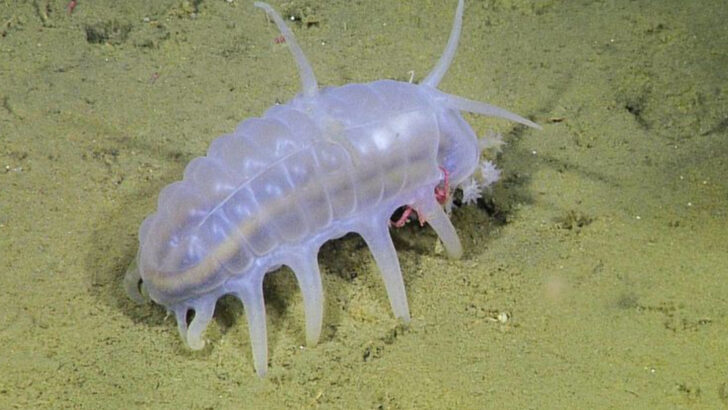Prepare to dive into the mysterious depths where the ocean’s rarest residents lurk—creatures so elusive, most people have only caught glimpses of them on camera. These aren’t your everyday fish; they’re the ocean’s hidden gems, ghosts of the deep, revealing themselves only when the stars align. What secrets do they hold? How do they survive in the darkest, strangest corners of our planet’s watery abyss? Get ready for a wild ride beneath the waves as we explore 11 ocean creatures so rare, they’ve become legends—seen by almost no one, yet captured forever on film. It’s a glimpse into a world most will never know firsthand, but everyone can marvel at.
Giant Squid
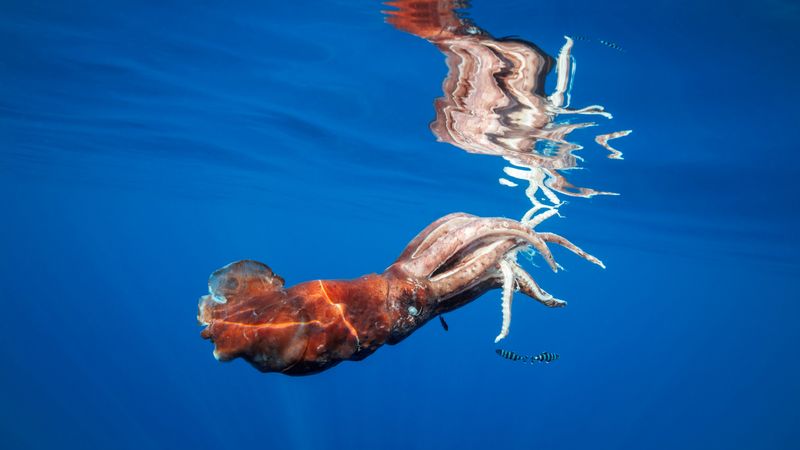
Few creatures inspire awe like the giant squid. Despite being the stuff of legend, this elusive giant has only been captured on camera a handful of times. Its massive, dinner-plate-sized eyes allow it to navigate the ocean’s twilight zone, where sunlight barely penetrates. These mysterious leviathans inhabit the deep, their tentacles stretching up to 40 feet.
Their rarity adds to the allure, mystifying scientists and seafarers alike. The giant squid’s secrets are slowly being unveiled, piece by cryptic piece. Did you know? Early sailors mistook their tentacles for sea serpents, fueling myths of monstrous krakens.
Goblin Shark
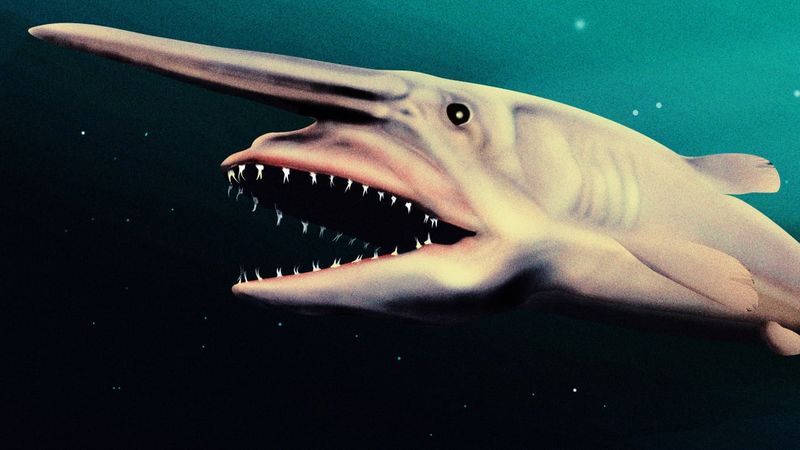
With a face only a mother could love, the goblin shark is often referred to as a “living fossil.” Its lineage dates back some 125 million years. Primarily found in deep waters, this shark’s bizarre appearance and jaw mechanism make it a fascinating subject for marine biologists.
The goblin shark’s protruding snout and toothy grin might spark curiosity or fear. These reclusive creatures are rarely seen, adding to their enigmatic nature. Fun fact: Its jaw can extend dramatically to snatch prey, a feature that surprises many. Such rare encounters offer a glimpse into ancient ocean life.
Frilled Shark
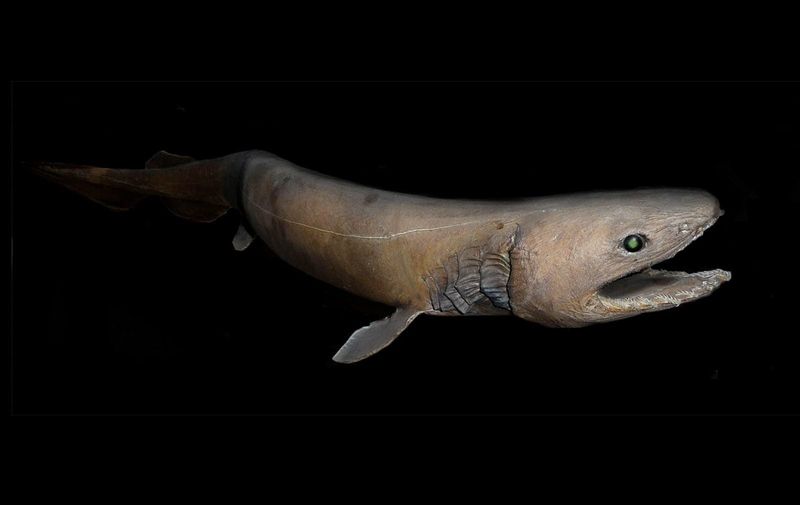
Resembling a creature from a prehistoric era, the frilled shark is a true deep-sea oddity. Its snake-like body and frilly gills give it a unique appearance that has captivated those lucky enough to see it. Living in the deep, dark waters, it seldom encounters human eyes.
Its discovery feels like a step back in time, offering insights into the ocean’s ancient past. The frilled shark’s unique hunting method involves lunging at prey with its flexible jaws. Did you know this “living fossil” has remained largely unchanged for millions of years? A rare glimpse indeed!
Vampire Squid

The vampire squid, despite its ominous name, is more of a gentle deep-sea drifter. It’s neither squid nor octopus but belongs to its own unique order. Its cloak-like webbing and bioluminescent photophores create a mesmerizing display in the dark ocean depths.
This elusive creature uses its glow to startle predators, a clever trick in the pitch-black abyss. Its rarity makes each sighting a special event for marine explorers. Fascinatingly, it’s a “living fossil,” unchanged for millions of years. Seeing one is like stepping into a world where time stands still.
Dumbo Octopus
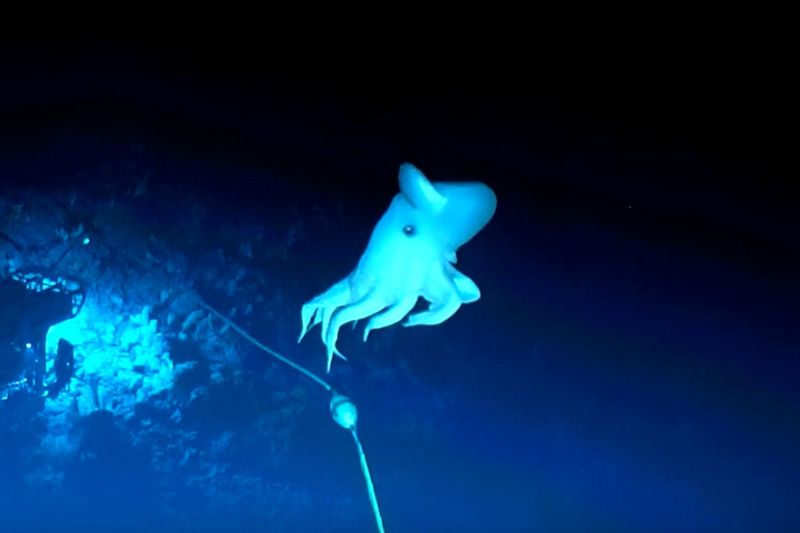
The dumbo octopus, with its cartoonish ear-like fins, is a delight to behold. Found at extreme depths, it seems to “fly” through the water with grace. Named after Disney’s Dumbo, this octopus resembles the flying elephant with its oversized fins and gentle movements.
Their sightings are rare, making each encounter a treasure for scientists. Despite their adorable appearance, they are efficient predators, using keen senses to hunt in the dark. Did you know? They can live more than 4,000 meters below the surface. Each encounter feels like discovering a mythical creature in the deep.
Deepstaria Enigmatica
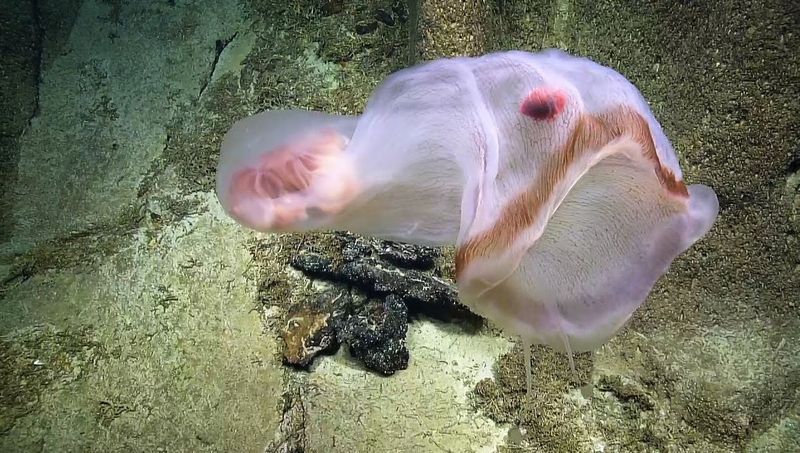
Drifting like a ghost in the ocean’s depths, Deepstaria enigmatica is a jellyfish unlike any other. Its translucent, sheet-like body undulates in the water, creating an otherworldly spectacle. Rarely observed, it is a captivating enigma of the deep sea.
This jellyfish lacks the typical tentacles, instead relying on its expansive surface to capture prey. Its unique appearance and behavior have intrigued scientists, always eager for a rare sighting. Interestingly, it was named after a deep-sea submersible. Such a name underscores its mysterious, underwater presence.
Fangtooth Fish

The fangtooth fish, with its fearsome appearance, is one of the deepest-dwelling fish known. Despite its small size, its sinister look is unforgettable, thanks to its oversized, needle-like teeth. It navigates the dark ocean depths with ease, adapted to life where few dare to tread.
Encounters with this rare creature are few and far between, adding to its mystique. The fangtooth’s appearance belies its modest appetite, primarily feasting on small fish and crustaceans. Did you know? Its teeth are so large, it can’t close its mouth. Such adaptations make it a true marvel of the deep.
Oarfish
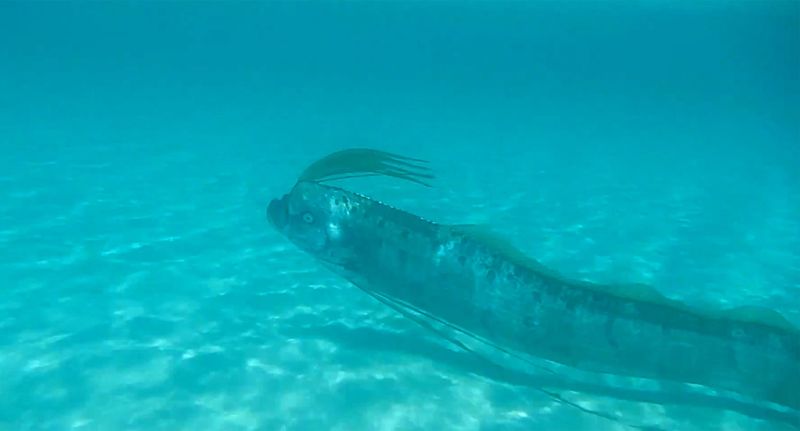
The oarfish, often mistaken for a sea serpent, is the longest bony fish in the ocean. Its shimmering scales and red-tipped fins make it a sight to behold. Rarely seen, these gentle giants can grow over 30 feet long, undulating through the water with grace.
Their appearances have inspired folklore and mystery, often mistaken for mythical creatures of the sea. The oarfish’s unique swimming method, vertical in the water, sets it apart. Fascinatingly, they are thought to surface before earthquakes, earning them the nickname “earthquake fish.” A true ocean enigma.
Barreleye Fish

The barreleye fish, with its transparent head and upward-facing eyes, is a marvel of evolution. This deep-sea dweller’s unique anatomy allows it to spot prey while remaining hidden. Its transparent dome protects its sensitive eyes, cleverly designed for its environment.
Such adaptations make the barreleye an extraordinary sight, albeit rarely seen. Its eyes can rotate within the transparent shield, scanning for prey or predators. Did you know? Its head acts like a natural “periscope,” a fascinating evolutionary trait. Witnessing this fish is like peering into the future of marine life.
Sea Pig

The sea pig, a distant relative of sea cucumbers, is a peculiar creature of the abyss. Its plump, pinkish body and tube-like legs give it an odd appearance, resembling a cartoon character more than a living organism.
Living on the ocean floor, these creatures feed on organic particles, rarely encountered by humans. Their strange looks and unique habitat have made them a subject of curiosity. Interestingly, they play a crucial role in the ocean’s ecosystem, cleaning the seabed. Did you know? Despite the name, they are not related to terrestrial pigs. A rare, delightful discovery.
Harp Sponge
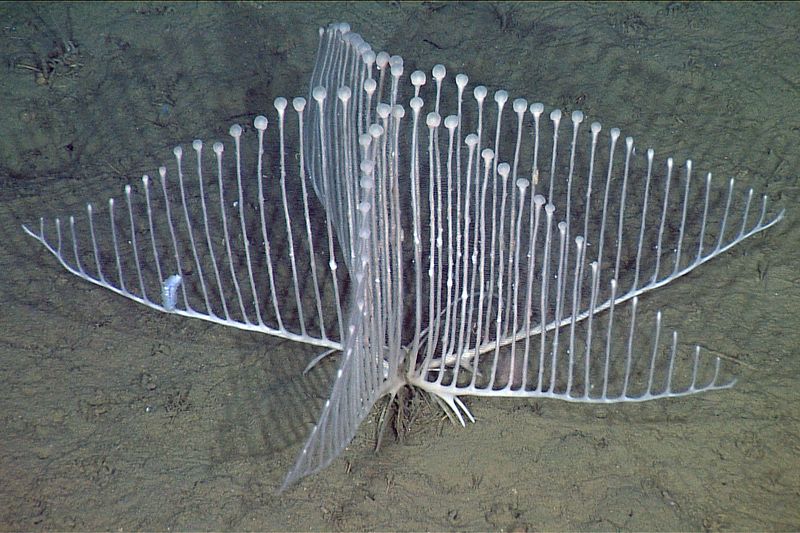
The harp sponge, an elegant deep-sea organism, resembles a musical instrument with its intricate, harp-like structure. Anchored to the ocean floor, it passively captures small prey with its unique branching arms.
This rare sponge’s design is both functional and beautiful, a true marvel of nature. Its discovery surprised scientists, revealing new insights into deep-sea life. Unlike typical sponges, it actively feeds on animals. Fascinatingly, it was named for its resemblance to a harp, highlighting nature’s artistic touch. Each sighting is a testament to the ocean’s unending wonders.

